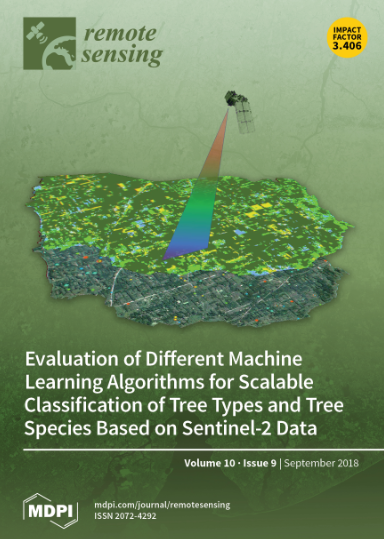城市环境中移动扫描平台点云的语义分割驱动集成
IF 4.2
2区 地球科学
Q2 ENVIRONMENTAL SCIENCES
引用次数: 0
摘要
建筑结构或工业场地精确而完整的三维表示对于结构监测或地籍等各种应用都至关重要。然而,获取这些数据集非常耗时,尤其是对于大型物体。移动扫描系统为这种情况提供了解决方案。对于复杂的场景,需要多个扫描系统来获取点云,并将其合并为物体的综合表征。由于移动物体或场景随时间的变化(如植被的季节性变化)会造成差异,因此很难合并从不同传感器或不同时间获得的单个点云。在本研究中,我们介绍了在一个建筑密集区中整合从两个移动扫描平台获得的点云的方法。我们使用了四足机器人和无人机(UAV)的组合。利用 PointNet++ 网络执行语义分割任务,从而能够检测非地面物体。实验测试使用多伦多 3D 数据集和 DALES 进行网络训练。根据性能,选择了在 DALES 上训练的模型作为进一步研究的对象。所提出的整合算法包括对两个点云进行语义分割,将其划分为正方形子区域,并通过检查空性或当两个子区域都包含点时进行子区域选择。对局部密度、中心点、覆盖率和欧氏距离等参数进行了评估。通过语义分割和聚类增强点云合并和增强功能,可以从点云中排除与这些可移动物体相关的点。根据文件大小、点数、平均粗糙度和噪声估计,对该方法和简单合并进行了比较分析。建议的方法在改善点云质量指标方面提供了充分的结果。本文章由计算机程序翻译,如有差异,请以英文原文为准。
Semantic Segmentation-Driven Integration of Point Clouds from Mobile Scanning Platforms in Urban Environments
Precise and complete 3D representations of architectural structures or industrial sites are essential for various applications, including structural monitoring or cadastre. However, acquiring these datasets can be time-consuming, particularly for large objects. Mobile scanning systems offer a solution for such cases. In the case of complex scenes, multiple scanning systems are required to obtain point clouds that can be merged into a comprehensive representation of the object. Merging individual point clouds obtained from different sensors or at different times can be difficult due to discrepancies caused by moving objects or changes in the scene over time, such as seasonal variations in vegetation. In this study, we present the integration of point clouds obtained from two mobile scanning platforms within a built-up area. We utilized a combination of a quadruped robot and an unmanned aerial vehicle (UAV). The PointNet++ network was employed to conduct a semantic segmentation task, enabling the detection of non-ground objects. The experimental tests used the Toronto 3D dataset and DALES for network training. Based on the performance, the model trained on DALES was chosen for further research. The proposed integration algorithm involved semantic segmentation of both point clouds, dividing them into square subregions, and performing subregion selection by checking the emptiness or when both subregions contained points. Parameters such as local density, centroids, coverage, and Euclidean distance were evaluated. Point cloud merging and augmentation enhanced with semantic segmentation and clustering resulted in the exclusion of points associated with these movable objects from the point clouds. The comparative analysis of the method and simple merging was performed based on file size, number of points, mean roughness, and noise estimation. The proposed method provided adequate results with the improvement of point cloud quality indicators.
求助全文
通过发布文献求助,成功后即可免费获取论文全文。
去求助
来源期刊

Remote Sensing
REMOTE SENSING-
CiteScore
8.30
自引率
24.00%
发文量
5435
审稿时长
20.66 days
期刊介绍:
Remote Sensing (ISSN 2072-4292) publishes regular research papers, reviews, letters and communications covering all aspects of the remote sensing process, from instrument design and signal processing to the retrieval of geophysical parameters and their application in geosciences. Our aim is to encourage scientists to publish experimental, theoretical and computational results in as much detail as possible so that results can be easily reproduced. There is no restriction on the length of the papers. The full experimental details must be provided so that the results can be reproduced.
 求助内容:
求助内容: 应助结果提醒方式:
应助结果提醒方式:


